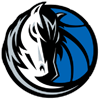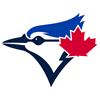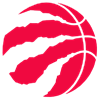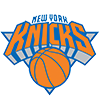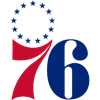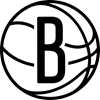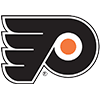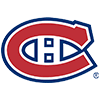Part 2: Hitting The Rookie Wall
The debate over college basketball's so-called "One-and-Done Rule" has been a heated one, and the season-ending injury to the University of Kentucky's Nerlens Noel, the presumptive number one overall pick in June's NBA Draft prior to his injury, has given opponents of the Rule new ammunition. The Rule itself is simple. Implemented starting with the 2006 NBA Draft, to be eligible to enter the Draft, a player must be 1) at least 19 years old and 2) at least one year out of high school. Essentially, the Rule compels high school graduates to spend a year either attending college or, in the trail that Milwaukee's Brandon Jennings blazed, playing ball internationally or in the NBA's Developmental League until they can meet the NBA's eligibility requirements.
In Part One of this two-part series, I recapped some of the main arguments in favor and against the NBA's One-and-Done Rule and hypothesized on the Rule's continued future in the NBA based on a look at the relevant law from 10,000 feet. However, the real question I wished to answer was one that fantasy junkies like myself have struggled with for years: is it safe to trust the kids? Namely, is it safer to draft "one-and-done" rookies for your team than it would have been to draft a high schooler prior to the arrival of the One-and-Done Rule? To answer the question, I dove into a sea of data. The result: with an additional
Part 2: Hitting The Rookie Wall
The debate over college basketball's so-called "One-and-Done Rule" has been a heated one, and the season-ending injury to the University of Kentucky's Nerlens Noel, the presumptive number one overall pick in June's NBA Draft prior to his injury, has given opponents of the Rule new ammunition. The Rule itself is simple. Implemented starting with the 2006 NBA Draft, to be eligible to enter the Draft, a player must be 1) at least 19 years old and 2) at least one year out of high school. Essentially, the Rule compels high school graduates to spend a year either attending college or, in the trail that Milwaukee's Brandon Jennings blazed, playing ball internationally or in the NBA's Developmental League until they can meet the NBA's eligibility requirements.
In Part One of this two-part series, I recapped some of the main arguments in favor and against the NBA's One-and-Done Rule and hypothesized on the Rule's continued future in the NBA based on a look at the relevant law from 10,000 feet. However, the real question I wished to answer was one that fantasy junkies like myself have struggled with for years: is it safe to trust the kids? Namely, is it safer to draft "one-and-done" rookies for your team than it would have been to draft a high schooler prior to the arrival of the One-and-Done Rule? To answer the question, I dove into a sea of data. The result: with an additional year of experience and growth under their belt as a result of attending college, the one-and-done players of the past seven years are generally better prepared to quickly adjust to the speed and talent of the NBA and are thus granted substantial minutes in their rookie seasons. With the top three picks of the 2012 Draft already playing considerable minutes in their rookie seasons, this trend seems likely to continue. Again, for a more detailed analysis, click here for Part One.
As you know, however, the NBA is constantly evolving during the season. This is especially true for the younger players. As contending teams button up for the stretch run, rotations are tightened. Alternatively, those teams that have little for which to play are eager to see what the future holds with their younger talent. As such, it's critical for fantasy owners to stay on top of developments down the stretch, particularly with the fantasy playoffs fast approaching. This means targeting which young players are likely candidates to break out over the final 20 games or so left on the NBA docket for most teams.
But, is it really so easy? Sure, we can all point to teams with crummy records that are rife for change. Take the Wizards, for example. It didn't take a rocket scientist to see Bradley Beal, whom the Wizards drafted with the third overall pick in last year's NBA draft, becoming a breakout player with the team tanking. The Wizards were happy to hand Beal all the minutes he could handle in February at the expense of veterans like Trevor Ariza. While Ariza has been a useful mercenary for six teams over his 11-year NBA career, he really fits best as a defensive stopper on a contending team. Washington, with its 21-42 record as of March 14, is decidedly not a contending team. Yet, on March 3, a funny thing happened. Beal sprained his left ankle near the end of a routine game against Philadelphia. While it's easy to dismiss his injury as some sort of freak occurrence, is that really fair?
We often hear about the mystical "rookie wall" in sports. In the NBA, the phrase refers to that magical 40-game mark where a rookie, embarking on his first 82-game campaign, takes a several-month mental-health break that extends until about the next summer league. This is supposedly because rookies have yet to be conditioned for the rigors of the grueling NBA season. As the story goes, a promising December and January inevitably lead to a petering-out in February to be followed by the invariable crash and burn after All-Star weekend.
Thus, the crux of this article is two-fold. First, does an extra year in college give the "one-and-done" rookies a leg up on their prep-to-pros compatriots from a prior era? In theory, the answer seems obvious. The college season lasts longer than the typical high school campaign. The talent level jumps significantly, meaning players should be used to being beaten up by skilled opponents on a regular basis. Further, collegiate athletes generally have access to superior strength and conditioning programs on campus and should be used to the in-season punishment of only a few days off between games. In theory, NBA rookies now should be better prepared to handle the stretch run than their prep-to-pro equivalents prior to 2006. But is this really the case?
Secondly, how should owners take into account the mythical rookie wall? Does it even exist? If so, should owners tread carefully when snagging available players like Beal or Michael Kidd-Gilchrist because of their alleged propensity to break down physically or mentally down the stretch or throw caution to the wind in hopes of securing the rookie who was handed the reins and can lead your fantasy team to glory?
Much like in Part One, to answer these questions, I compared the rookie year stats of two sets of players: those players drafted in the first round from 2000 to 2005 that entered the league directly out of high school vs. those players drafted in the first round from 2006 to 2011 that attended one year of college before entering the league.* There have been six draft classes since the One-and-Done Rule was incorporated in 2006 but since the 2012 draft class' season has yet to conclude, they were excluded from this analysis (but still listed below). For the sake of symmetry, I only reviewed the statistics of those high school drafted in the five years leading up to the Rule. This incorporates a time frame that is relevant for our purposes given that fantasy basketball is a more recent phenomenon than either fantasy football or baseball, but leaves out a few of the aging prep-to-pro ballers including Kevin Garnett and Kobe Bryant. One other potential research bias that must be noted before we proceed is that this analysis did not take into account either high school stars who opted for college despite their potential to be drafted in the first round prior to the One-and-Done Rule (i.e. Rivals 2002 #1 high school senior Carmelo Anthony, who chose to play a year at Syracuse before jumping to the NBA) or those high school seniors who likely would have jumped straight to the pros if possible after 2006 but ended up staying in school for longer than one year for a number of reasons, including failing to immediately live up to their considerable hype (i.e. Rivals 2009 #4 high school senior John Henson, who underwhelmed in his first two seasons at UNC before being drafted 14th overall in the 2012 NBA Draft).
*Brandon Jennings is lumped in the group of players having attended a year of college even though he spent one after high school playing for Lottomatica Roma in Italy instead of attending college.
| Player | Dft. Pos. | NBA Rookie Team | School | GP | Mins | Pts | FG% | FT% | Ast | Reb | Stl | Blk | To |
| Anthony Davis | 1 | NOH | Kent. |
| Michael Kidd Gilchrist | 2 | CHA | Kent. |
| Bradley Beal | 3 | WAS | Fla. |
| Andre Drummond | 9 | DET | Conn. |
| Austin Rivers | 10 | NOH | Duke |
| Maurice Harkless | 15 | ORL | St. Johns |
| Tony Wroten | 25 | MEM | Wash. |
| Marquis Teague | 29 | CHI | Kent. |
2011
| Kyrie Irving | 1 | CLE | Duke | 9 | 27.2 | 17.2 | 0.454 | 0.864 | 4.2 | 3.2 | 1.2 | 0.2 | 3.2 |
| Enes Kanter | 3 | UTAH | Ken. | 20 | 11.5 | 4.0 | 0.636 | 0.686 | 0.1 | 2.7 | 0.2 | 0.4 | 1.1 |
| Tristan Thompson | 4 | CLE | Texas | 20 | 27.2 | 9.5 | 0.452 | 0.597 | 0.6 | 7.4 | 0.6 | 0.9 | 1.5 |
| Brandon Knight | 8 | DET | Kent. | 20 | 31.9 | 13.5 | 0.435 | 0.743 | 4.0 | 3.1 | 0.9 | 0.2 | 2.9 |
| Tobias Harris | 19 | MKE | Tenn. | 10 | 11.6 | 5.7 | 0.558 | 0.778 | 0.6 | 3.5 | 0.1 | 0.1 | 0.9 |
| Cory Joseph | 29 | SAS | Texas | 2 | 31.1 | 6.5 | 0.222 | 0.667 | 2.0 | 4.0 | 1.5 | 0.5 | 1.5 |
2010
| John Wall | 1 | WAS | Kent. | 19 | 39.0 | 18.5 | 0.412 | 0.818 | 6.9 | 5.3 | 2.3 | 0.8 | 4.1 |
| Derrick Favors | 3 | NJ | Ga. Tech | 0 | N/A | N/A | N/A | N/A | N/A | N/A | N/A | N/A | N/A |
| De Marcus Cousins | 5 | SAC | Kent. | 20 | 30.5 | 13.6 | 0.432 | 0.761 | 3.9 | 9.2 | 1.3 | 0.8 | 4.0 |
| Xavier Henry | 12 | MEM | Kansas | 0 | N/A | N/A | N/A | N/A | N/A | N/A | N/A | N/A | N/A |
| Eric Bledsoe | 18 | LAC | Kent. | 19 | 17.2 | 7.2 | 0.520 | 0.686 | 2.4 | 2.2 | 1.4 | 0.2 | 2.2 |
| Avery Bradley | 19 | BOS | Texas | 7 | 7.5 | 3.4 | 0.462 | 0.000 | 0.6 | 0.7 | 0.3 | 0 | 0.7 |
| Daniel Orton | 29 | ORL | Kent. | 0 | N/A | N/A | N/A | N/A | N/A | N/A | N/A | N/A | N/A |
2009
| Tyreke Evans | 4 | SAC | Memphis | 15 | 37.6 | 19.6 | 0.443 | 0.753 | 7.1 | 6.9 | 1.6 | 0.1 | 3.3 |
| DeMar DeRozan | 9 | TOR | So. Cal. | 20 | 23.2 | 10.0 | 0.574 | 0.787 | 0.7 | 2.6 | 0.4 | 0.1 | 0.6 |
| Brandon Jennings | 10 | MIL | Italy | 20 | 30.9 | 14.4 | 0.388 | 0.849 | 4.6 | 3.1 | 1.3 | 0.1 | 2.3 |
| Jrue Holiday | 17 | PHI | UCLA | 20 | 34.7 | 12.2 | 0.487 | 0.692 | 6.4 | 3.9 | 1.9 | 0.3 | 3.5 |
| Byron Mullens | 24 | OKC | Oh. St. | 1 | 1.8 | 0 | 0 | 0 | 0 | 0 | 0 | 0 | 0 |
2008
| Derrick Rose | 1 | CHI | Memphis | 19 | 38.9 | 17.9 | 0.500 | 0.806 | 6.5 | 4.8 | 0.9 | 0.3 | 2.4 |
| Michael Beasley | 2 | MIA | Kans. St. | 20 | 26.4 | 15.1 | 0.500 | 0.763 | 1.5 | 6.0 | 0.5 | 0.5 | 1.2 |
| OJ Mayo | 3 | MEM | USC | 20 | 38.7 | 17.4 | 0.448 | 0.898 | 4.1 | 2.8 | 1.3 | 0.1 | 3.0 |
| Kevin Love | 5 | MIN | UCLA | 19 | 28.1 | 14.7 | 0.470 | 0.802 | 0.8 | 9.7 | 0.6 | 0.7 | 1.6 |
| Eric Gordon | 7 | LAC | Indiana | 20 | 38.0 | 18.7 | 0.485 | 0.828 | 3.1 | 2.8 | 1.0 | 0.5 | 2.6 |
| Jerryd Bayless | 11 | POR | Arizona | 13 | 7.6 | 1.5 | 0.296 | 0.429 | 0.5 | 0.5 | 0.1 | 0 | 0.8 |
| Anthony Randolph | 14 | GS | LSU | 19 | 26.2 | 11.3 | 0.486 | 0.719 | 1.4 | 8.5 | 1.2 | 1.4 | 1.3 |
| JJ Hickson | 19 | CLE | N. Car. State | 7 | 4.9 | 1.3 | 0.333 | 1.000 | 0 | 1.7 | 0.1 | 0.3 | 0 |
| Kosta Koufos | 24 | UTAH | OSU | 0 | N/A | N/A | N/A | N/A | N/A | N/A | N/A | N/A | N/A |
| Donte Green | 28 | SAC | Syracuse | 18 | 15.7 | 3.8 | 0.281 | 1.000 | 0.6 | 1.8 | 0.4 | 0.2 | 1.0 |
2007
| Greg Oden | 1 | POR | Oh. St. | 15 | 17.4 | 8.5 | 0.550 | 0.645 | 0.1 | 6.1 | 0.1 | 1.1 | 1.0 |
| Kevin Durant | 2 | SEA/OKC | Texas | 20 | 37.8 | 23.1 | 0.501 | 0.885 | 2.7 | 5.0 | 0.9 | 0.8 | 2.7 |
| Mike Conley Jr | 4 | MEM | Oh. St. | 20 | 26.6 | 10.4 | 0.423 | 0.727 | 3.9 | 3.4 | 0.7 | 0 | 1.8 |
| Brandan Wright | 8 | GS | N. Car. | 13 | 9.7 | 3.5 | 0.559 | 0.875 | 0.2 | 1.9 | 0.2 | 0.9 | 0.4 |
| Spencer Hawes | 10 | SAC | Wash. | 17 | 24.3 | 8.4 | 0.471 | 0.522 | 1.5 | 5.5 | 0.5 | 1.1 | 1.2 |
| Thaddeus Young | 12 | PHI | Ga. Tech | 20 | 26.1 | 10.7 | 0.536 | 0.791 | 1.1 | 4.2 | 1.1 | 0.1 | 0.8 |
| Javaris Crittenton | 19 | LAL | Ga. Tech | 15 | 19.9 | 8.0 | 0.412 | 0.750 | 1.4 | 3.9 | 0.6 | 0 | 1.5 |
| Daequan Cook | 21 | MIA | Oh. St. | 18 | 33.8 | 11.7 | 0.384 | 0.625 | 1.7 | 4.5 | 0.6 | 0.2 | 1.6 |
2006
| Tyrus Thomas | 4 | CHI | LSU | 19 | 19.3 | 8.4 | 0.500 | 0.642 | 0.8 | 5.7 | 0.9 | 1.1 | 1.4 |
| Shawne Williams | 17 | IND | Memphis | 19 | 19.0 | 6.5 | 0.510 | 0.611 | 0.8 | 2.9 | 0.2 | 0.1 | 0.9 |
2005
| Martell Webster | 6 | Portland | HS Sr | 19 | 24.8 | 10.5 | 0.444 | 0.872 | 0.9 | 3.6 | 0.7 | 0.3 | 0.8 |
| Andrew Bynum | 10 | LAL | HS Sr | 12 | 7.2 | 0.9 | 0.263 | 0.250 | 0.3 | 1.3 | 0.2 | 0.5 | 0.1 |
| Gerald Green | 18 | Boston | HS Sr | 19 | 16.4 | 7.6 | 0.479 | 0.793 | 0.8 | 1.5 | 0.5 | 0.2 | 1.0 |
2004
| Dwight Howard | 1 | ORL | HS Sr | 20 | 34.5 | 15.8 | 0.564 | 0.657 | 1.1 | 10.2 | 1.3 | 1.5 | 2.8 |
| Shaun Livingston | 4 | LAC | HS Sr | 17 | 31.5 | 8.8 | 0.415 | 0.776 | 6.4 | 3.6 | 1.1 | 0.2 | 2.8 |
| Robert Swift | 12 | SEA | HS Sr | 4 | 7.2 | 2.8 | 0.667 | 0.600 | 0 | 0.8 | 0 | 1.3 | 0.5 |
| Sebastian Telfair | 13 | POR | HS Sr | 19 | 33.9 | 11.5 | 0.437 | 0.745 | 5.8 | 2.4 | 1.1 | 0.2 | 2.6 |
| Al Jefferson | 15 | BOS | HS Sr | 19 | 12.8 | 6.7 | 0.552 | 0.733 | 0.4 | 3.9 | 0.4 | 0.3 | 0.9 |
| Josh Smith | 17 | ATL | HS Sr | 20 | 35.3 | 14.5 | 0.460 | 0.731 | 1.9 | 7.9 | 0.7 | 2.0 | 2.0 |
| JR Smith | 18 | NOH | HS Sr | 20 | 32.6 | 15.2 | 0.397 | 0.717 | 2.6 | 3.2 | 0.9 | 0 | 2.4 |
| Dorell Wright | 19 | MIA | HS Sr | 2 | 13.0 | 3.5 | 0.333 | 1.000 | 1.5 | 0.5 | 2.0 | 0 | 1.5 |
2003
| LeBron James | 1 | CLE | HS Sr | 20 | 39.0 | 22.0 | 0.429 | 0.730 | 6.9 | 4.6 | 2.0 | 0.7 | 3.3 |
| Travis Outlaw | 23 | POR | HS Sr | 1 | 7.6 | 4.0 | 0.667 | 0.000 | 0 | 0 | 1.0 | 0 | 0 |
| Ndudi Ebi | 26 | MIN | HS Sr | 0 | N/A | N/A | N/A | N/A | N/A | N/A | N/A | N/A | N/A |
| Kendrick Perkins | 27 | BOS | HS Sr | 3 | 2.6 | 2.7 | 0.800 | 0.000 | 0.7 | 2.0 | 0 | 0 | 0.3 |
2002
| Amar'e Stoudemire | 9 | PHX | HS Sr | 20 | 29.6 | 13.9 | 0.510 | 0.628 | 1.2 | 7.4 | 1.0 | 1.6 | 2.3 |
2001
| Kwame Brown | 1 | WSH | HS Sr | 20 | 19.3 | 7.1 | 0.406 | 0.708 | 1.3 | 4.9 | 0.6 | 0.6 | 1.3 |
| Tyson Chandler | 2 | CHI | HS Sr | 20 | 26.4 | 8.6 | 0.462 | 0.674 | 0.9 | 6.6 | 0.4 | 1.6 | 1.6 |
| Eddy Curry | 4 | LAC | HS Sr | 20 | 22.9 | 10.5 | 0.573 | 0.776 | 0.4 | 5.2 | 0.3 | 0.9 | 1.0 |
2000
| Darius Miles | 3 | LAC | HS Sr | 20 | 30.9 | 11.2 | 0.558 | 0.557 | 1.3 | 5.6 | 0.8 | 1.8 | 1.9 |
| DeShawn Stevenson | 23 | UTAH | HS Sr | 2 | 16.1 | 6.0 | 0.333 | 0.667 | 1.5 | 0.5 | 0.5 | 0 | 1.5 |
First, as it turns out, the added year of college ball does not seem to add any discernible advantage when it comes to rookies hitting the rookie wall. My presumptions that one-and-done players are better prepared to weather the rigors of the NBA season down the stretch was not borne out by the statistical analysis. In fact, a number of name-brand one-and-done rookies who populated fantasy rosters throughout the NBA season missed significant games down the stretch, including Kyrie Irving, Tyreke Evans and Greg Oden. It's possible that these are simply isolated cases of players who were injury-prone to start. We all know of Oden's well-documented injury history. Irving missed nearly his entire freshman year at Duke with a foot injury and is currently is in danger of missing the rest of the year with shoulder problems. Even Evans has played in more than 72 games in a single season.
While this all may be explained away, the fact of the matter is that the group of prep-to-pros analyzed here did not suffer similar fates. Every player who could reasonably be considered a fantasy contributor managed to play in at least 19 games with the exception of Shaun Livingston, who still played in 17 games. Many of them managed to do so while seeing an increase in minutes over their season averages. Thus, despite the advantages of additional maturity and improved strength and conditioning that are perceived to come with spending a year in college, it is actually the greener high schoolers that showed greater durability for fantasy owners.
What does this distinction between the one-and-dones and the prep-to-pros really mean for fantasy owners? Well, not a whole lot. However, the data in its entirety is useful in lending owners insight into what they can expect from current rookies down the stretch. Despite the noted injury-prone exceptions, we've seen an incredible string of health from contributing rookies over the past 12 years. However, the analysis doesn't stop there. Not only are rookies of the past decade showing the ability to stay healthy over the long grind of the NBA season, many are actually playing more minutes and taking on more responsibility compared to their season averages as non-contending teams hand over the reins to the youth movement. As a result, rookies who were relied upon to play heavy minutes early in the year become more comfortable with the speed of the NBA game and generally post improved counting stats across the board. This phenomenon is most apparent with players draft in the top 10 of the draft. In addition, players who were on shorter leashes or given limited minutes early in the season, such as J.R. Smith, Josh Smith, Spencer Hawes and Jrue Holiday, readily explode onto the fantasy scene over the final 20 games once given all the minutes they can handle for lottery-bound teams.
As such, the rookie wall has proven to merely be a myth. While there are inherent injury risks with any players, rookies do not seem any more susceptible to succumbing to a malady down the stretch than any other fantasy contributor. In the alternative, it seems as though rookies, fresh legs and all, seem well equipped to handle the workload over the final push, and actually are posting improved statistics relative to their season averages in many cases. With games played nearly as critical as the counting stats players post for owners entering the fantasy playoffs, rookies can be a safe and valuable playoff commodity for savvy owners looking to avoid the injury-riddled minefield of the final 20 games of the season.
Justin Fielkow is an attorney at the Franklin Law Group in Northfield, Illinois, a Chicago suburb. Justin attended Tulane University Law School and obtained a Certificate in Sports Law. He has been writing for Rotowire since 2008, first while at the University of Wisconsin, then and still as the beat writer for the New Orleans Saints, and now as a featured columnist providing insight twice a month into the legal side of sport with a fantasy spin.









